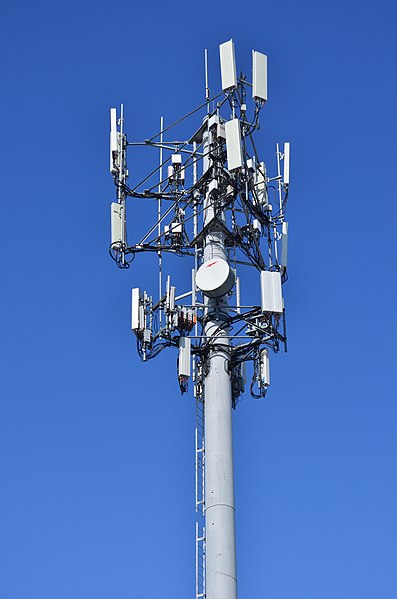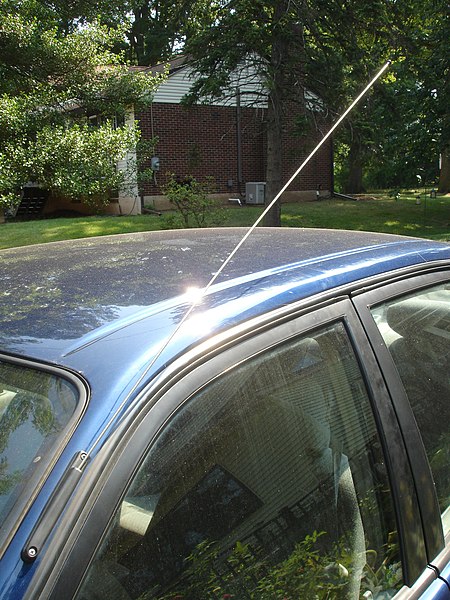A monopole antenna is a class of radio antenna consisting of a straight rod-shaped conductor, often mounted perpendicularly over some type of conductive surface, called a ground plane.
The driving signal from the transmitter is applied, or for receiving antennas the output signal to the receiver is taken, between the lower end of the monopole and the ground plane. One side of the antenna feedline is attached to the lower end of the monopole, and the other side is attached to the ground plane, which is often the Earth. This contrasts with a dipole antenna which consists of two identical rod conductors, with the signal from the transmitter applied between the two halves of the antenna.

A typical mast radiator monopole antenna of an AM radio station in Chapel Hill, North Carolina. The mast itself is connected to the transmitter and radiates the radio waves. It is mounted on a ceramic insulator to isolate it from the ground. The other terminal of the transmitter is connected to a ground system consisting of cables buried under the field.
Marconi's first monopole transmitter
One of Marconi's early monopole antennas at his Poldhu, Cornwall transmitting station, 1900, consisting of a small metal plate suspended from a wooden arm with a long wire running down to the transmitter in the building.
Multi-lobed radiation pattern of a 3/ 2 wavelength monopole. Monopole antennas up to 1/ 2 wavelength long have a single "lobe", with field strength declining monotonically from a maximum in the horizontal direction, but longer monopoles have more complicated patterns with several conical "lobes" (radiation maxima) directed at angles into the sky.
In radio engineering, an antenna or aerial is the interface between radio waves propagating through space and electric currents moving in metal conductors, used with a transmitter or receiver. In transmission, a radio transmitter supplies an electric current to the antenna's terminals, and the antenna radiates the energy from the current as electromagnetic waves. In reception, an antenna intercepts some of the power of a radio wave in order to produce an electric current at its terminals, that is applied to a receiver to be amplified. Antennas are essential components of all radio equipment.
Multiple patch (rectangular) antennas found atop a Cellular Tower
Antennas of the Atacama Large Millimeter/submillimeter Array
An automobile's whip antenna, a common example of an omnidirectional antenna
Half-wave dipole antenna








